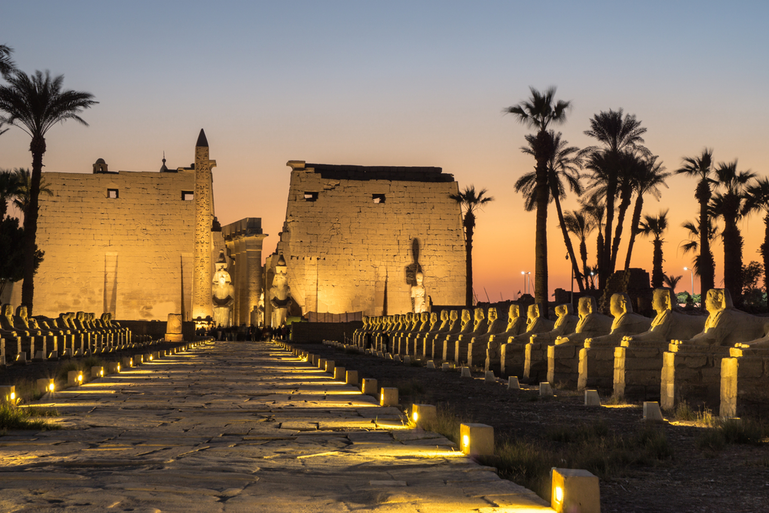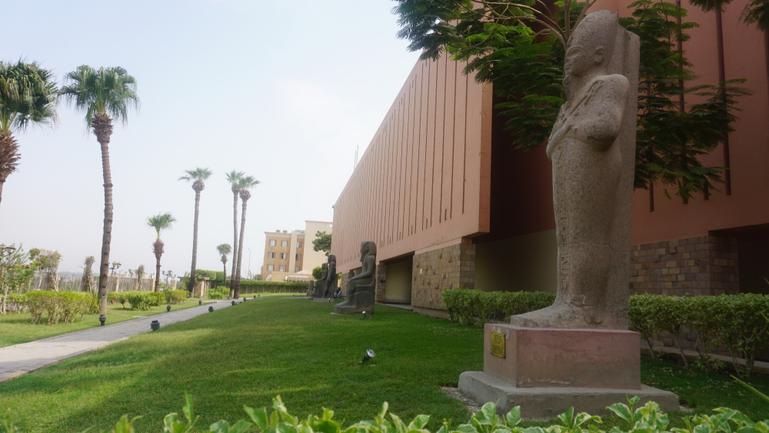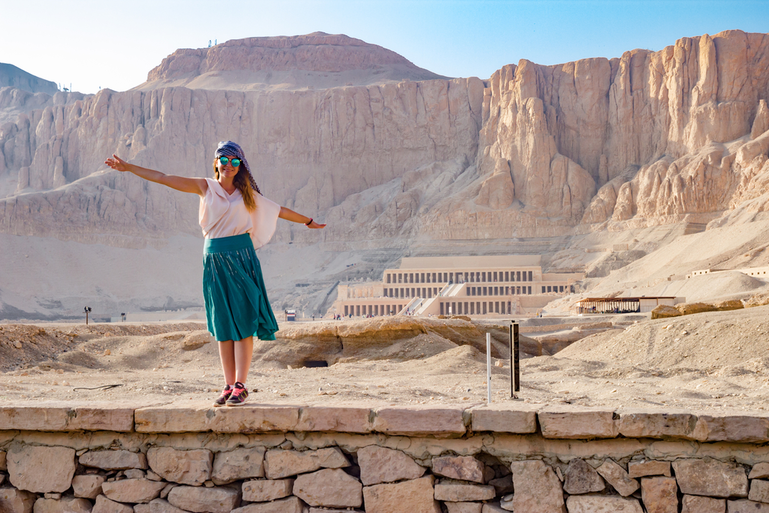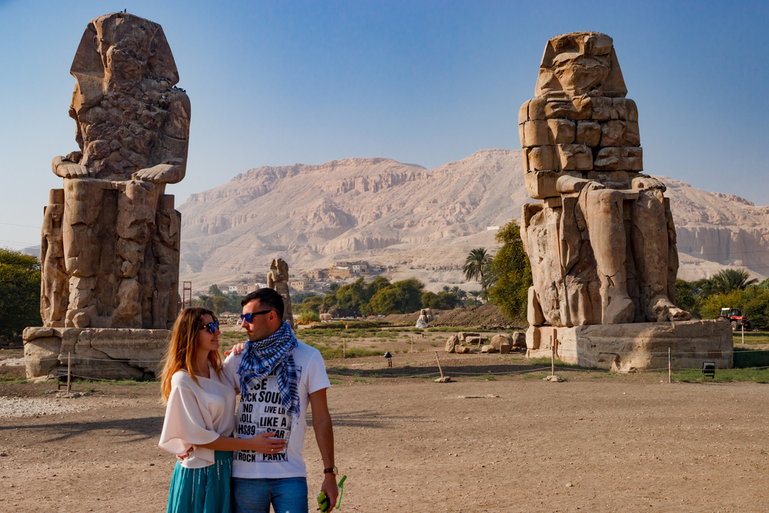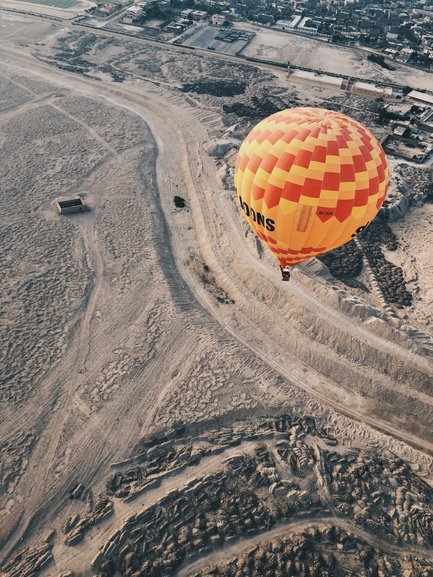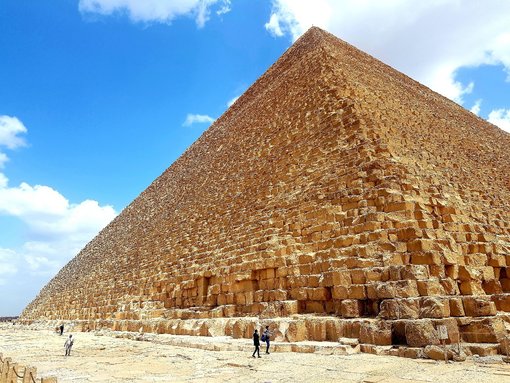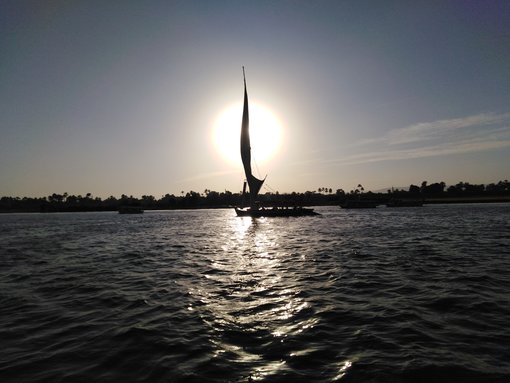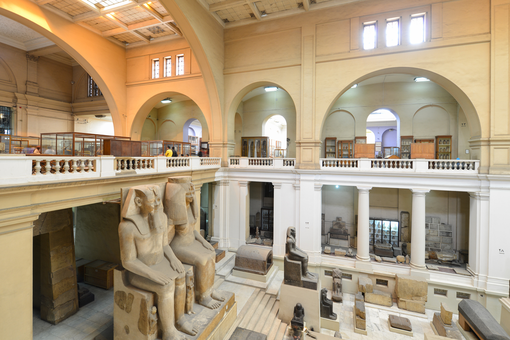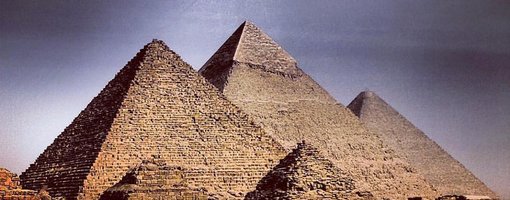Luxor or Thebes, the richest and the most important archaeological site in ancient Egypt. It locates about 760 Kms south of Cairo. Thebes was Known in ancient Egyptian texts as t3-ipt, which means “southern Harim”, or southern Quarters, referring to the temple of ipt-rsyt, known as Luxor Temple which was founded by Amenhotep III. The word t3-ipt became Thebaiy or Thebes in the Greek language then Theba or Teba in the Arabic language.
The Word Luxor was the Arabic name of Thebes, the Arabs were fascinated and impressed, when they saw its huge Temples and imagined that they were palaces with hundreds of gates. So the word Luxor was derived from the Arabic word “Kousor” which means Palaces.
The river Nile divided the city into two parts East bank and west bank of the Nile and here it is the most important Things to do at Luxor.
Karnak Temple
It locates to the east bank of Luxor, north to Luxor temple. It is regarded as one of the greatest cult temple, dedicated mainly to the cult of the Theban triad Amun, Mut and Khonsu. Karnak temples are an important record for ancient Egyptian History and civilization, as early as the Middle Kingdom until the Greco-Roman period.
Each ruler was very careful to have his own addition to Karnak Temple, either as a chapel, Pylon, obelisk or a complete intact Temple. The kings of the New Kingdom date and on words insisted on having their own buildings at Karnak temple, as god Amon at that period was supreme god and he was also associated with war field.
Luxor Temple
Luxor Temple remains the most impressive of the temples in ancient Egypt due to its simplicity. It has a unique orientation for an Egyptian Temple.
It counts among its enclosures, 3 kinds of religion, The Ancient Egyptian religion, Christianity and Islam. Luxor temple locates to the east bank of the river Nile, alongside and parallel to The Nile. It is regarded as a cult temple dedicated mainly to the Triads of Thebes “Amon-re, Mut and Khonsu.
The temple was founded by Amenhotep III (1390-1352 Bc), and augmented by successive kings, including Ramses II and Alexander the Great.
The Sphinx Avenue between Karnak temple and Luxor temple was to serve the professional way of the opet Festival from Karnak to Luxor temple and to determine the land road to the entrance of the temple. It is composed of 2 rows of human-headed sphinxes, each is carved from a single block of sandstone and placed on a rectangular base.
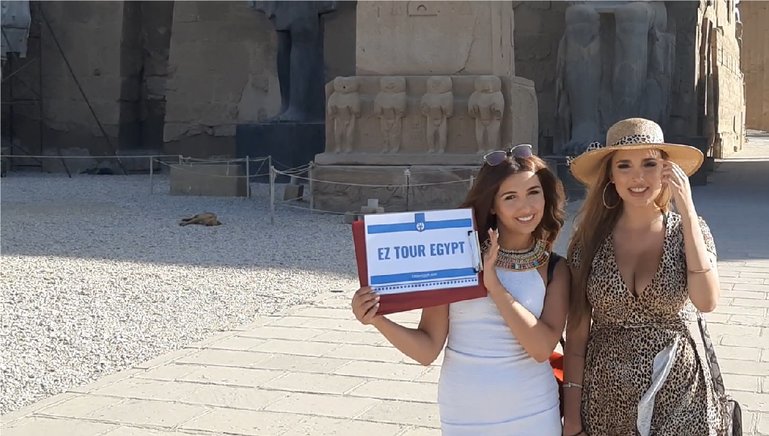
Our beautiful Guests Bianca
Luxor Museum
holds a beautiful collection of Luxor area, which tells the story of Luxor from the old kingdom tell the Islamic Period. The museum houses two royal mummies, the Luxor Temple cache and as well reconstructed wall of Akhenaton.
Valley of the kings
Kings of the new kingdom chose Luxor to be their capital, and also they chose the hilly area of the west bank for their tombs. The choice of this mountain area was not chosen haphazardly but was mainly chosen for 2 main reasons, the first was to ensure that the mummy will stay preserved for the second journey, and of course it wouldn’t be robbed by tomb robbers as their predecessors of the old kingdom period.
The final number of tombs excavated in valley of the kings reached to 62 tombs. The kings of the 18th Dynasty had a habit of hiding the mummy and the funerary furniture in those hidden tombs with hidden undecorated entrance, while the religious and funerary rituals would be performed in the so called” funerary temples” which would be beside the vegetation of the west bank of Luxor.
However, the kings of the 20th dynasty decided to ignore that idea of hiding their tombs and they depend on blocking the entrances of the tombs by big slabs of stones and decorated their entrances as long as they would be guarded.
Hatshepsut Temple
Hatshepsut Temple is the most famous of Egyptian Temples and one of Egypt great wonders and one of the main Luxor and Egypt attractions built by Queen Hatshepsut of the 18 Dynasty. The temple located below the rocky cliffs at El dier el Bahari, just a short distance of the famous valley of the kings.
Madinat Habu
Madinat Habu is one of Egypt's most beautifully decorated temples. It’s one of the main Luxor attractions of with valley of the kings and Hatshepsut temple.
The Temple was built by the last strong Pharaoh Ramses III associated by a royal palace, which was surrounded by a battlement enclosure wall. The reliefs here are one of the best sunk relief you will see in Egypt.
Valley of the Queens
Valley of the Queens was chosen for the tombs of the Queens and Princesses of the 19th and 20th dynasties, while the the 18th dynasty queens preferred to be buried in valley of the kings like Queen Hatshepsut, Tawesrt and queen Ti the wife of Amonophis III.
There are over 70 tombs excavated in the area, most of them are without ant texts or decorations but there is the most important tomb of Queen Nefertari, the wife of Ramses II.
Tombs of the Nobles
Tombs of the Nobles contains over 400 tombs. These were either Nobles or official or tittles of high ranks or even some times the poor workers of tombs cutters, including much better preserved examples of tomb paintings.
The tomb paintings show the scene of the daily life and they are not concerned to lead the dead to the afterlife.
For examble tombs of Sennofer and Rekhmire have incredibly detailed paintings depicting scenes from the men's daily lives, work, and family life. Sennofer was an overseer during the reign of Amenhotep II, Sennofer was an overseer during the reign of Amenhotep II while Rekhmire was the pharaoh's vizier.
Tomb of Queen Nefertari, House of the ETERNITY
this magnificent tomb has exquisite wall paintings reveal a ritual process and illustrate Nefertari’s journey of transformation into a blessed soul in the hereafter.
But what made this tomb a very special one among other tombs to an extent that it was considered to be an artistic legend. The multitude of colors in her tombs is exceptional, the theme of the tomb is timelessness.
Ramseum Temple
Ramseum Temple is the mortuary temple of Ramses II lies on the edge of the cultivated land. The temple pylon contains the battle scenes of Ramses 2 with the Hittites similar to the scenes of Abusimbel.
Inside the First, Court are the remains of a colossal figure of the king, which is estimated to have originally had a total height of 17.5 meters and to have weighed more than 1,000 tons.
Dier el Madina contains the workers' village where the artisans of the royal tombs lived and built their tombs at the same place. The tomb paintings are well preserved and showing daily life activities.
Memnon colossi
The Colossi of Memnon are two massive stone statues of the Pharaoh Amenhotep III, who reigned Egypt during the Dynasty XVIII. The two Colossi standing as a guard at the entrance to the Amenhotep's mortuary temple in the west bank of Luxor.
Felucca ride
One of the important things to do at Luxor is the Felucca ride, especially if you’re not coming to Luxor on a Nile Cruise.
Feluccas are these traditional sailboats you’ll notice in huge numbers on the Nile river, whether in Luxor, Cairo or Aswan. They have been used to sail the Nile since ancient times when pharaohs ruled Egypt.
Sailing down the river Nile while watching the Luxor Temple and Winter Palace Hotel on the east bank and the pink hills of the West Bank.
One of the most popular felucca rides in Luxor is the Banana Island which is covered with banana plantations. the Guide will take you on a short exploratory tour of the island where you’ll be offered a refreshing cup of traditional Egyptian tea and some of the sweetest, most delicious bananas you’ve ever tasted.
Hot air Balloon ride
If you want to see Luxor in all its morning glory at sunrise, you should make a hot air Balloon ride over Luxor. It is a sunrise adventure with breathtaking views over the valley of the kings, Hatshepsut temple, the Nile river and the east bank of Luxor.
How long does it take to see Things to do at Luxor?
It differs from a stay to the other, for example, if you are coming on a Nile cruise, then you have two days, one day to see the east Bank with Karnak and Luxor Temple and the second day to the west bank visiting valley of the kings, Hatshepsut temple and Madinat Habu Temple.
If you will stay in a hotel 3 days will be enough to cover all the important sites of Luxor, for example one day visiting the east bank (Karnak, Luxor temple and Luxor Museum) and 2 days to see the west bank in details (Valley of the kings, Hatshepsut Temple, Valley of the Queens, Valley of the Nobles, Valley of the workers, Ramseum Temple, Madinat Habu Temple, Seti 1 Temple and Memnon colossi).
If You are coming to Luxor for one day from Hurghada or from Cairo, you can Visit the Highlights of Luxor Like Karnak and Luxor Temple then crossing the Nile to the West bank visiting Valley of the Kings and Hatshepsut Temple.
Where to eat in Luxor?
I recommend to eat in a local Restaurants either at the east bank or at the west bank, even the local restaurants have the best magical view of the Nile in Luxor. For example, at the east bank Al Sahabi Lane Restaurant with a spectacular view of Luxor temple and the Nile or El Hussin restaurant at Karnak district. On the west bank Africa Restaurant with a view of Luxor east bank.
You can get excellent deals for your stay in Luxor and visit all the places mentioned in our Things to do at Luxor list, where meals, accommodation, transfers, and entrance fees to the main sites along with professional tour guide can be included in the price.
